Royal Lytham & St. Annes – Hole by Hole
This is my third post from a fall 2024 golf trip to northwest England organized by Platinum Golf Scotland. In the first post we struggled a bit with the up and down terrain at Wallasey, but all agreed that it is a fantastic course. Our second course was 13 time Open host Royal Liverpool which undoubtedly has an amazing golf history, but frankly did not inspire me in the way Wallasey did. Today we will play another venerable Open venue, Royal Lytham & St. Annes which has hosted the tournament 11 times. Please join our group for a hole by hole description.
History of Royal Lytham & St. Annes
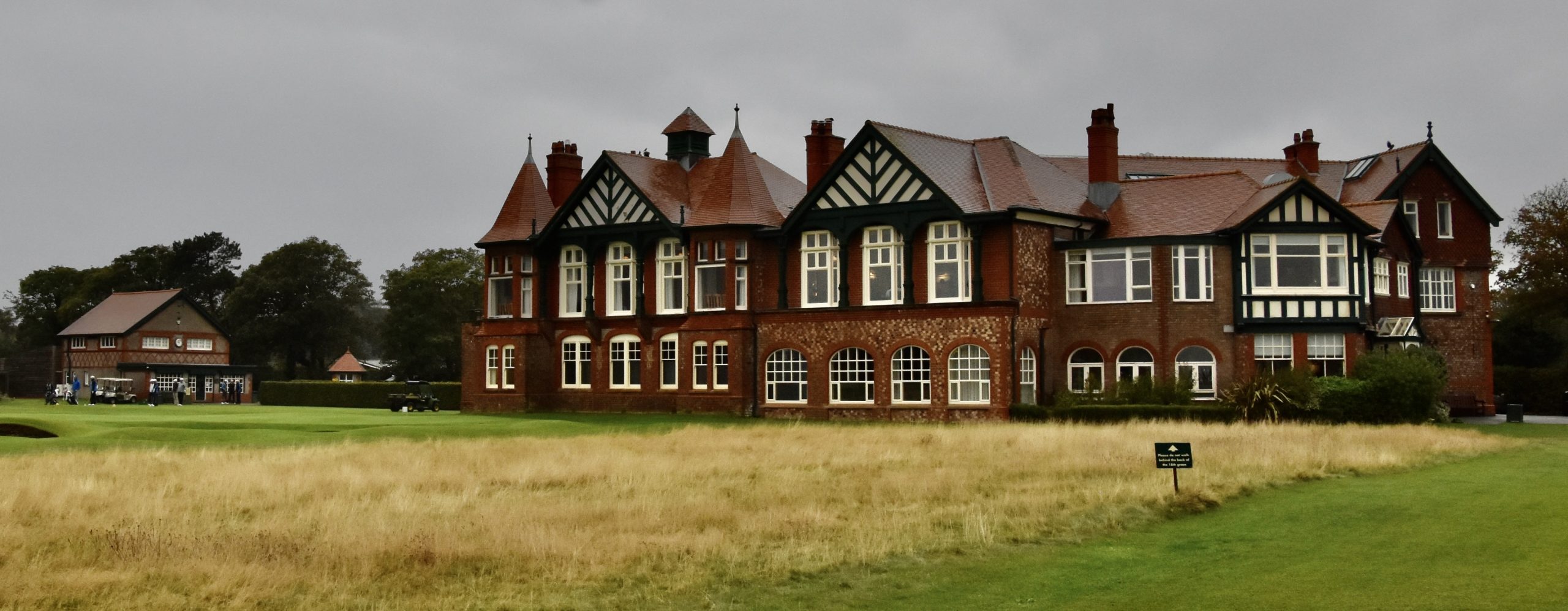
Although Royal Lytham & St. Annes was founded in 1886, its current location dates to 1897 on a site originally laid our by George Lowe, a Scottish protege of Old Tom Morris and more famous for being one of the first people to design a matched pair of clubs. In 1919 Harry Colt was hired to do a redesign and most of what we will see today dates from that period. Readers might recall that he also did the redesign of Royal Liverpool which I was not that impressed with. Much more impressive for me are the two top ten courses in Canada that he is responsible for – Hamilton and Toronto Golf Clubs.
With Colt’s redesign Royal Lytham & St. Annes hosted its first Open in 1926 which was won by Bobby Jones whom we have encountered at both Wallasey where he qualified for the 1930 Open and at Royal Liverpool where he won it. Here too we find a portrait of Jones inside the clubhouse.
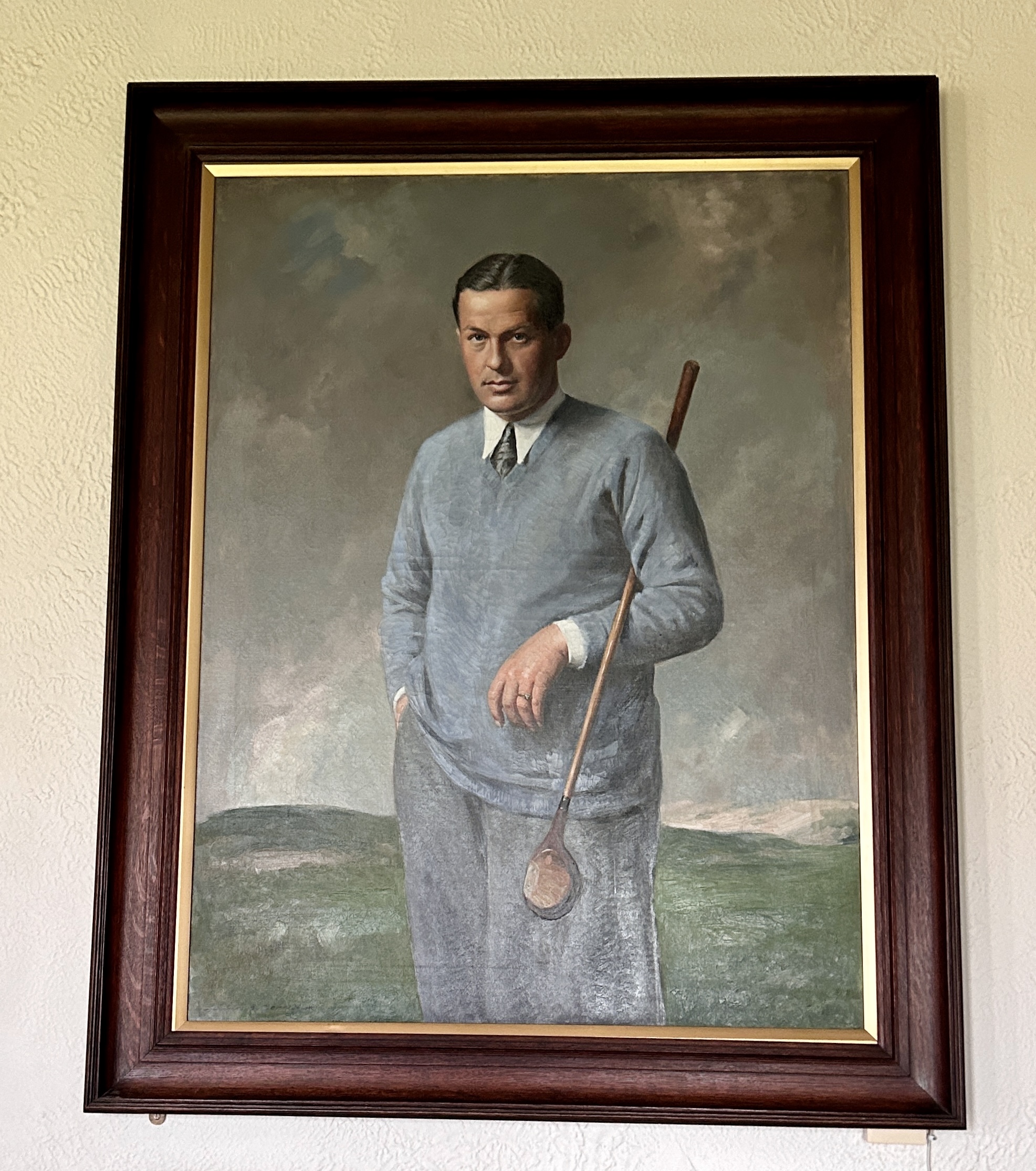
It wasn’t until 1952 that the Open returned to Royal Lytham & St. Annes where South African Bobbly Locke won his third of four championships. After that the course became a regular in the rotation returning nine more times and with a list of illustrious winners including Australian Peter Thomson who won his fourth of five here in 1958, New Zealander Bob. Charles, the first lefty to win, in 1963, England’s own Tony Jacklin in 1969 and the Black Knight Gary Player won his third here in 1974. However, perhaps the most notable winner here was 21 year old Seve Ballesteros who made a miracle shot from the parking lot at the 16th to win in 1979. Ballesteros won it again in 1988 and he too is celebrated with a portrait in the clubhouse.

In 1996 Tom Lehman won his only major here as did the enigmatic David Duval in 2001. The last winner here was Ernie Els in 2012 when he benefitted from an epic collapse by Adam Scott who bogied the last four holes. There is a photo in the clubhouse of an appreciative Els who almost couldn’t believe that he had actually won.

Unfortunately it is not clear that The Open will ever return to Royal Lytham & St. Annes due to its lack of space to accommodate the needs of a modern tournament. It is completely surrounded on all sides by housing developments and a railway so there is no room to expand. There isn’t even room for a proper driving range.
The Open aside, Royal Lytham & St. Annes has plenty more history to be proud of including hosting the Ryder Cup in 1961 where future major winners Arnold Palmer, Billy Casper and Gene Littler made their debut. The U.S. trounced the GB & Ireland side 14½ to 9½. The contest returned in 1977 where rookie Nick Faldo along with five time participant Tony Jacklin were no match for the likes of Jack Nicklaus, Ray Floyd, Tom Watson, Hale Irwin and Lanny Wadkins, the U.S. again whipping GB & Ireland 12½ to 7½. The lopsided results finally convinced the Brits and Irish that they had to let other Europeans compete in order to be competitive and thus Royal Lytham & St. Annes was the last host to the original Ryder Cup format.
The Women’s Open has been held here five times with Annika Sorenstam completing her Grand Slam here in 2003. The Senior Open has also been held here five times with Bob Charles claiming the title in 1993 some thirty years after his Open triumph. Bernard Langer, at age 61, won his final of four Senior Open titles here in 2019. Tom Watson also played his last professional event here that same year.
Amateur golf has also had its share of events at Royal Lytham & St. Annes including the 2015 Walker Cup when GB & Ireland gained a measure of revenge for those Ryder Cup defeats by shredding the American team that included Bryson DeChambeau, 16½ to 9½.
So there’s one hell of pile of golf history at Royal Lytham & St. Annes and it’s really something to actually to be able to play a course like this.
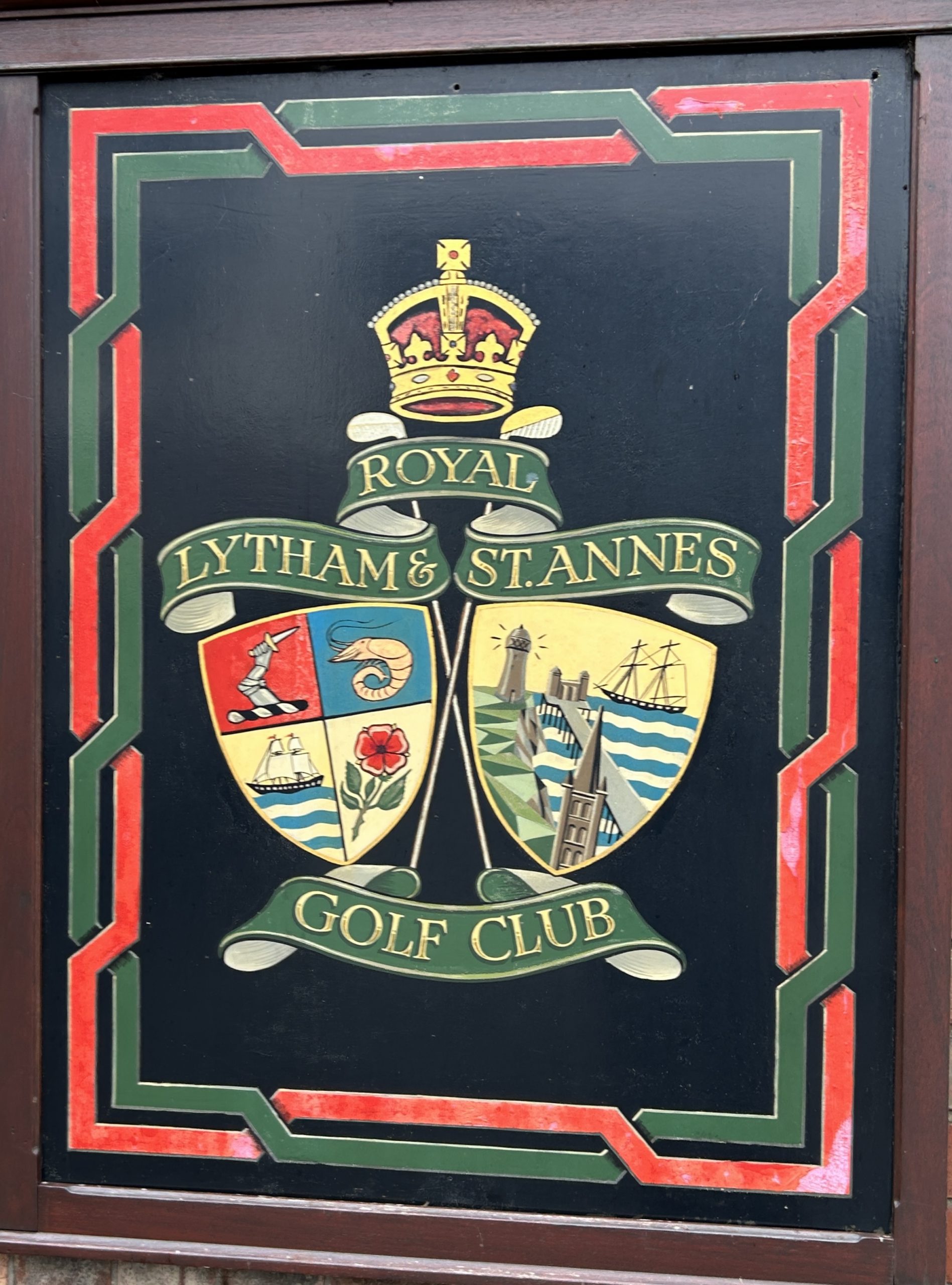
So let’s warm up by hitting some balls. Oh, I forgot there is no driving range. Well then how about some putts on this green that fronts the Dormy House where visitors have been staying for over a century.
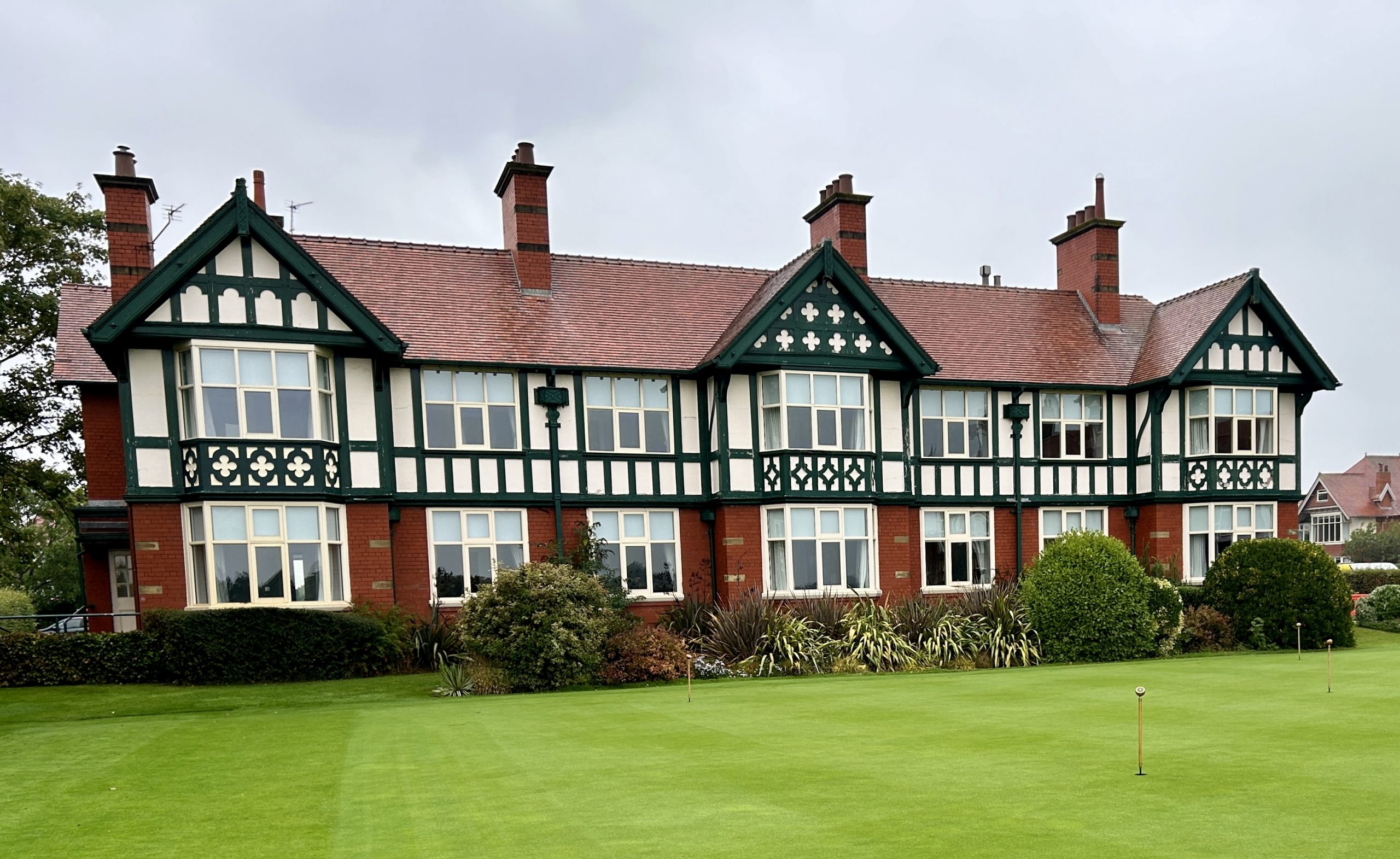
The first tee is adjacent to the putting green and here we meet our caddie Alan Bolton. We are playing in a threesome today as one of our group is under the weather. Alan will carry Brian’s bag and Chuck and I will have pull carts. For the two of us he will do his job by telling us alignment off the tee, giving yardages, finding errant balls and reading the greens. I can say without reservation that Alan was adept at all of these as well as being great company.

Now here’s the thing about Royal Lytham & St. Annes that makes it a real test of golf – it has 174 pot bunkers. Not just your run of the mill sand traps, but pot bunkers with faces as steep as 12 feet or more. Compare that to 112 at both the Old Course and Carnoustie and you’ll see why this course has been described as a beast. For this reason we have decided to play from the forward tees which is only 5854 yards, but I notice that groups much younger than us are doing so as well. Any help in avoiding the bunkers at Royal Lytham & St. Annes is welcome. There’s also another reason – it’s raining pretty well as we start out, but predicted to clear up during the round. I surely hope so. Ok, let’s play this course that is rated in the Top 100 in the world.
Royal Lytham #1 – 169 Yard Par Three
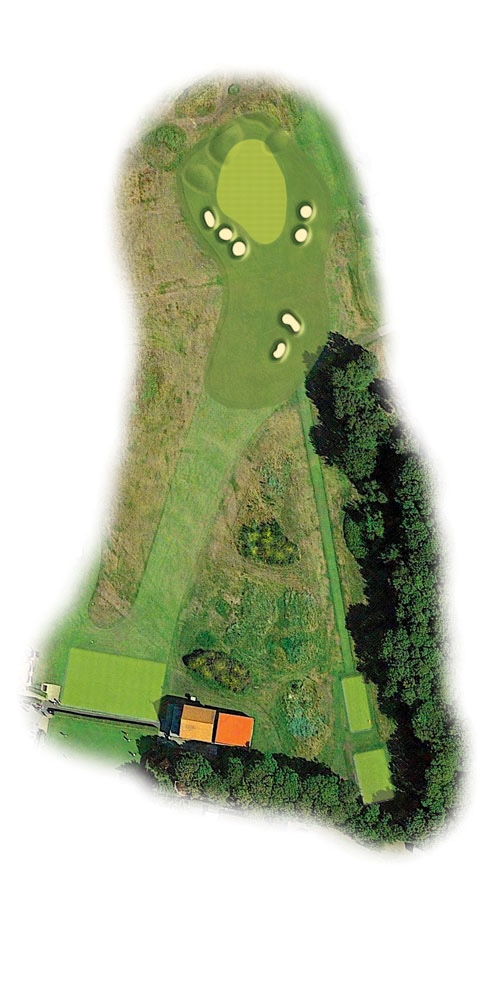
Royal Lytham St. Annes has a few more things other than its outrageous number of bunkers that separate it from other Open venues. It is the only one that starts with a par three and it’s the only one that does not have any holes that run beside the sea. The Irish Sea never gets closer than several hundred yards and there are no sweeping views of dunes and strands that you get at many if not most links courses. Nonetheless it certainly has the look of a links course starting with this hole which immediately brings the bunkers to your attention with five guarding the green and two more in the fairway where you might try to land a ball to roll onto the green.
Due to the rain I will have to use hole maps from the Royal Lytham website until it lets up.
We soon learn that most of the greens at Royal Lytham & St. Annes are relatively flat, but many of them a slightly elevated enough that balls that are not hit to the fat of the green are very likely to roll off into one of the pot bunkers. The greens themselves are faster than those we have played at Wallasey and Royal Liverpool, but still quite manageable speed wise. If you can avoid the bunkers here then par is possible, but if you don’t then, depending on how well you know how to play them, it can be the start of a long day.
#2 – 375 Yard Par Four
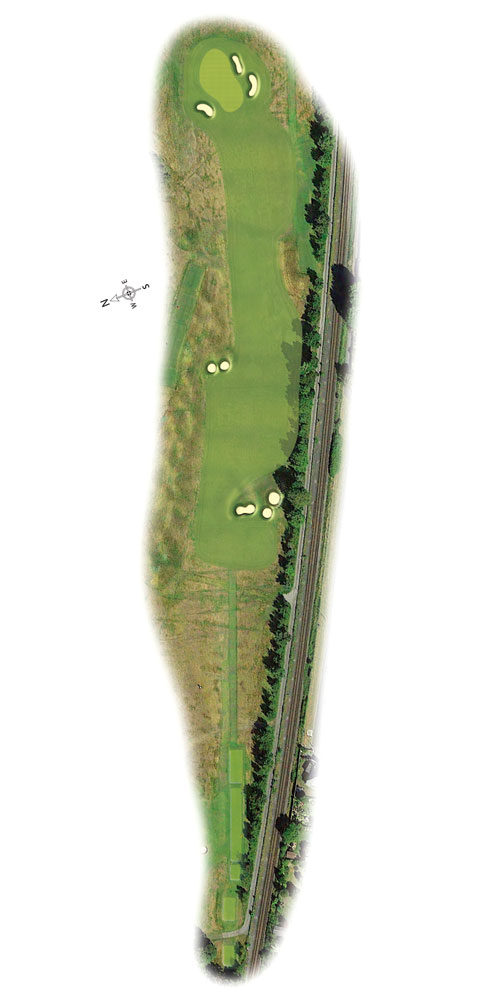
This hole plays a brutal 481 yards from the back tees, but even from the forward tees it’s a tough hole for several reasons. Firstly there’s OB down the entire right side with next to no room for a mistake on that side. Secondly the traps on the right are perfectly placed to catch a short drive and the ones on the left to snare a longer one. It’s almost target golf to land safely somewhere in between the two.
That will still leave a fairly long second shot to a green that has almost a false front that slopes up from front to back. There are three kidney shaped bunkers guarding this green, a shape you don’t often see on links courses. This the #5 stroke hole at Royal Lytham & St. Annes and it definitely plays to its level of difficulty.
Royal Lytham #3 – 418 Yard Par Five
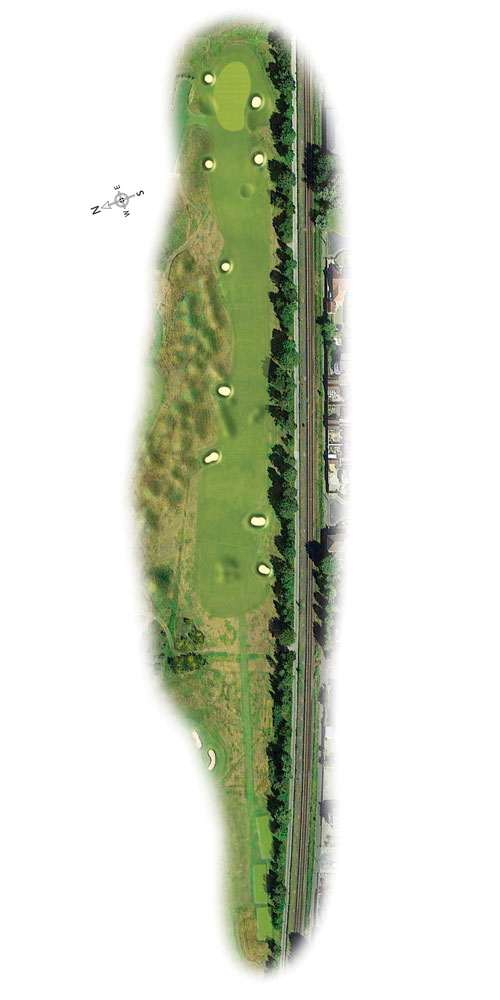
Now here’s one of the upsides of playing the forward tees. The assumption is you can’t play for shit or else you are a woman. Either way anything over 400 yards is not going to be reachable in two for most people who play from these tees. Thus, while the pros get only two par fives at Royal Lytham & St. Annes, us lesser beings not too proud to play from the forward tees get a pile of them starting with this hole. Somehow there is a comfort in this knowing that by playing to get there in three instead of a daunting two you can hatch a plan to avoid both the OB all down the right side again and one of the seven pot bunkers that seem to be strewn randomly down both sides of a very narrow fairway. It also means that by coming in with a wedge on the approach shot there is a much better chance of not going off the back of this green which has a severe downslope into a mat of rough behind it.
During The Open this is the #1 stroke hole, but for us it’s only #9 and a very doable par five.
#4 – 357 Yard Par Four
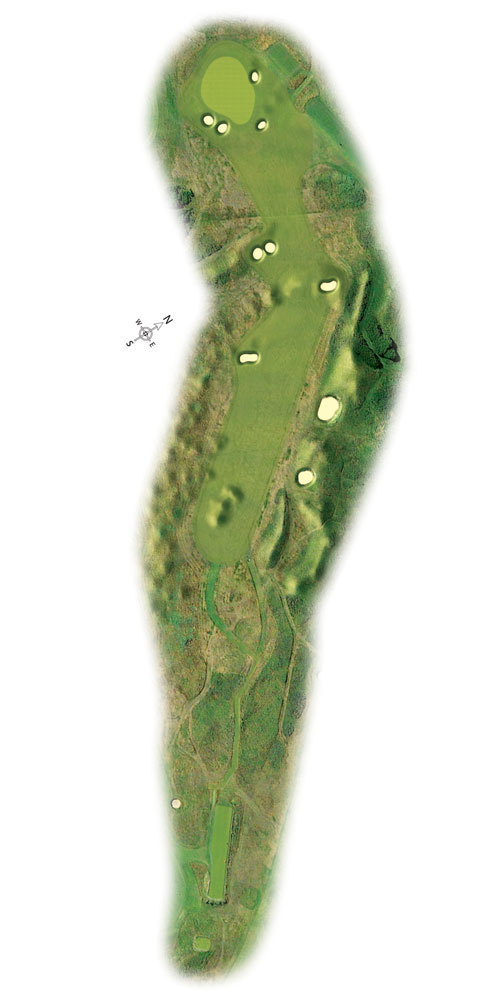
Well now the joke’s on us as we face the #1 stroke hole from the forward tees while for everybody else it’s #9. Talk about a reversal of fortunes. This is the first of a number of doglegs at Royal Lytham & St. Annes and it’s a doozy. To get to the corner from where you can actually see the green requires not only a long drive, but a perfect one as well since the fairway narrows to only about 10 yards with traps and very thick rough waiting to snag anything less than perfect. Play it safe by hitting something shorter than a driver and you’ve got a blind second shot to an elevated green protected by four very deep bunkers. There really is no strategic way to deal with this hole and still bring par into the equation. My advice is to play hopscotch with the second shot and come on to the green in three. Bogie is a very good number on this hole which also plays into the prevailing wind.
Royal Lytham #5 – 147 Yard Par Three
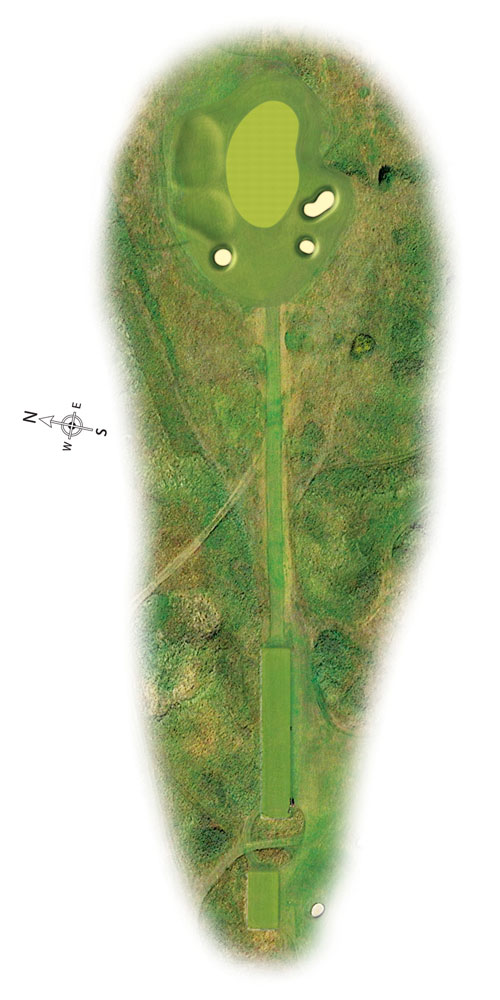
The second par three at Royal Lytham & St. Annes requires that the ball be carried all the way to the green or else it will either be in a bunker or in the fescue. Fortunately that’s a doable proposition from just 147 yards with the right club selection. A nice reprieve after #4.
#6 – 407 Yard Par Five
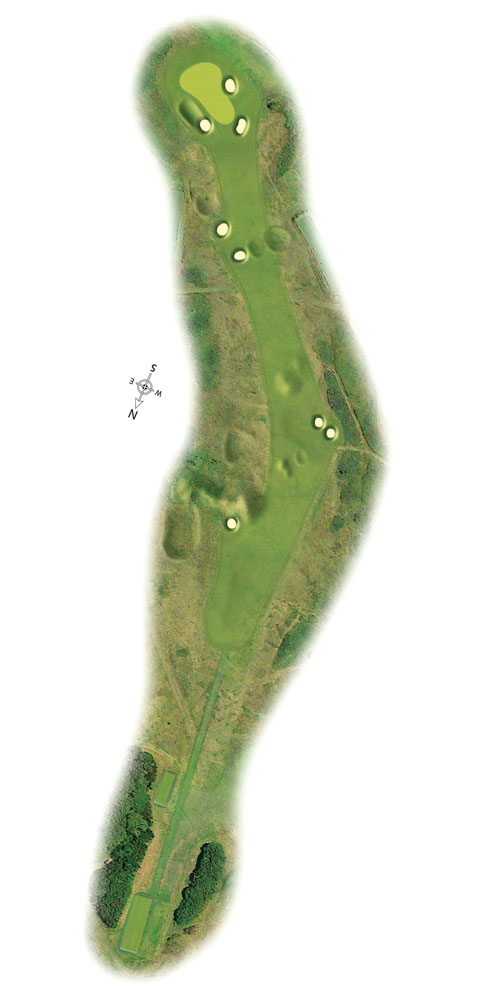
Another hole that is a par four for the pros and a par five for the rest us and who’s complaining? As a par five the biggest issue is keeping the ball in play on the very narrow fairways on this hole. That means playing well to the right of the first fairway bunker on the drive, clearing all the mess around the corner without getting into the bunkers short of the green on the second and executing a decent pitch to a once again elevated green. While the bump and run approach is a standard tactic on links courses, there aren’t many opportunities to do that at Royal Lytham & St. Annes so you must be at the top of your wedge game.
Even as a par five this is the #7 stroke hole so making those three shots I just described is much easier written about than accomplished in real life.
Royal Lytham #7 – 512 Yard Par Five
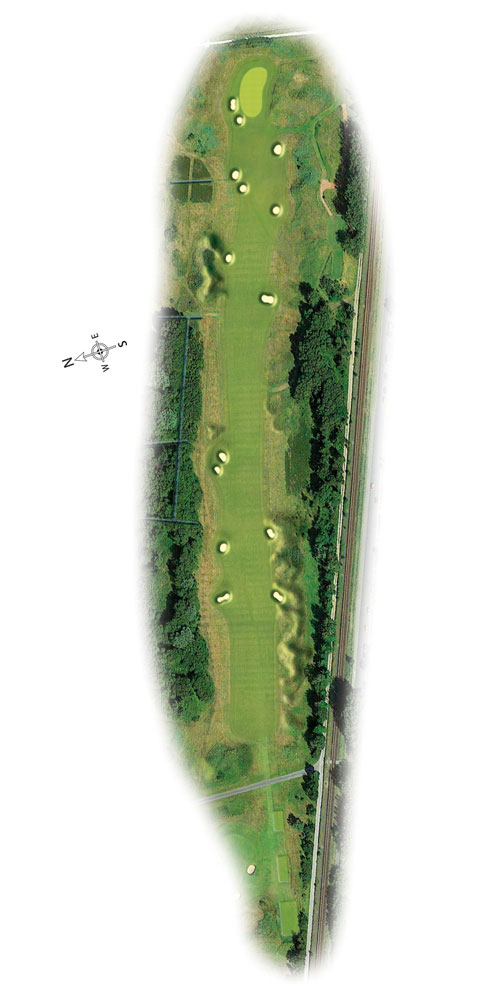
This is every bit a legitimate par five for every level of player. It’s long, it’s narrow and it’s seems as if Johnny Appleseed was here spreading bot bunkers everywhere instead of apple seeds – there are no less a dozen and that’s before you even get to the green where two more lie in wait. You really do need a caddy on a hole like this to keep your composure, because something is almost definitely going to go wrong on this hole. The good news is that the rain is letting up and I might actually get some real photos to illustrate this post.
#8 – 311 Yard Par Four
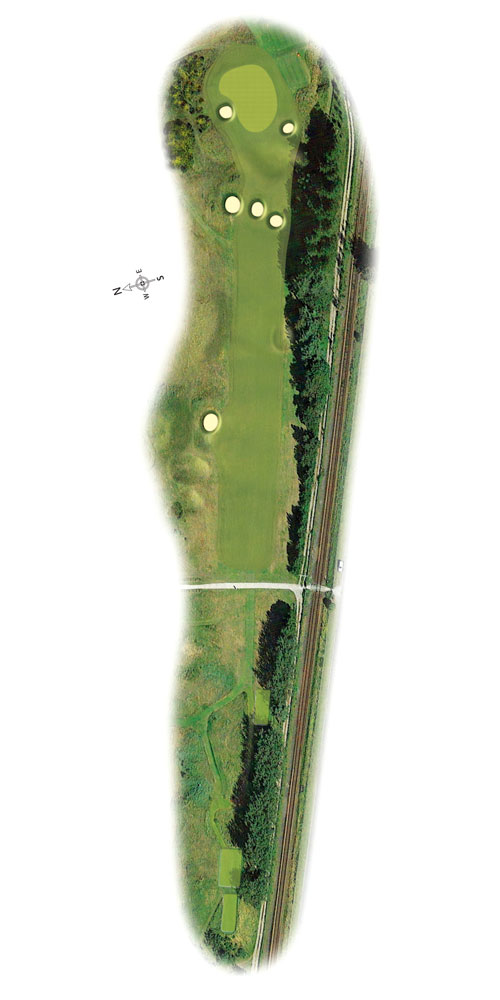
Hole #8 at Royal Lytham & St. Annes is the first of a number of short par fours that each has its own distinct challenge. It is the final hole that has OB on the right and does not require a driver to find the narrow fairway just in front of the three bunkers. The rain has finally stopped and this photo shows where you should be after you drive. There is more room behind these bunkers than it appears and the challenge is to take enough club to get to the green.
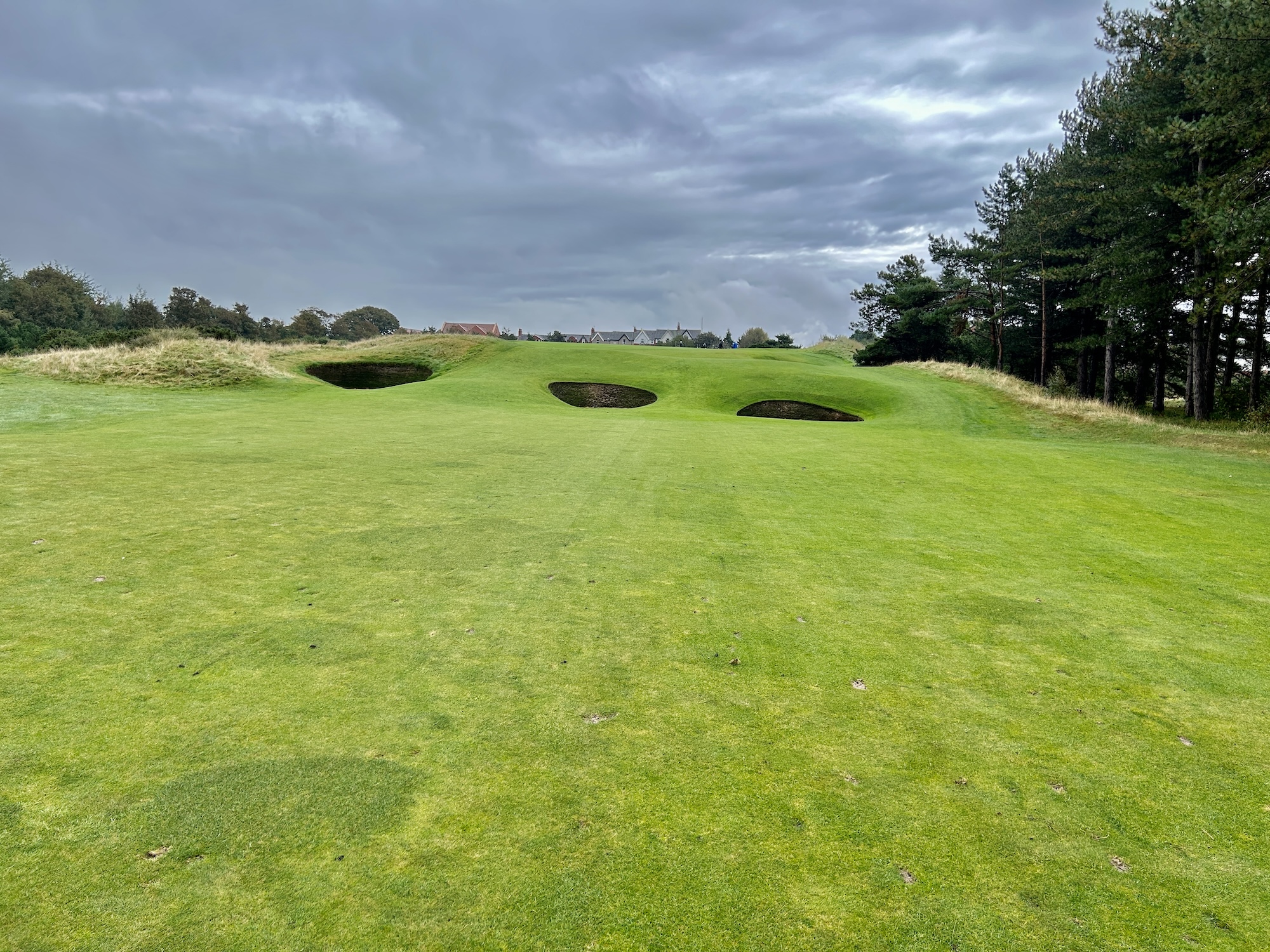
Once on the green you have this look back down the fairway which gives an idea of just how narrow this and the other holes leading up to here have been. Fortunately there is not much wind today or this course could have been a nightmare.
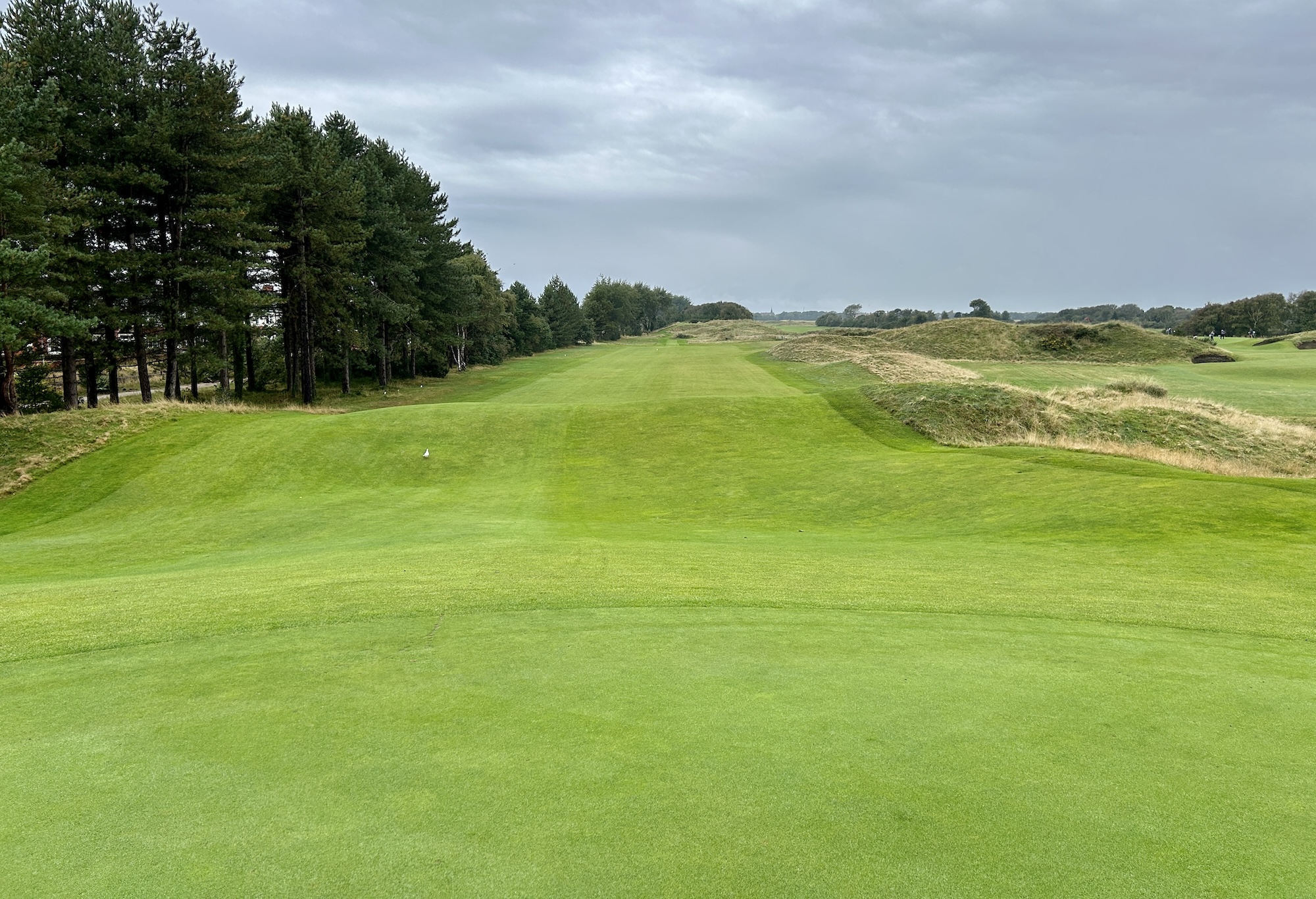
Royal Lytham #9 – 137 Yard Par Three
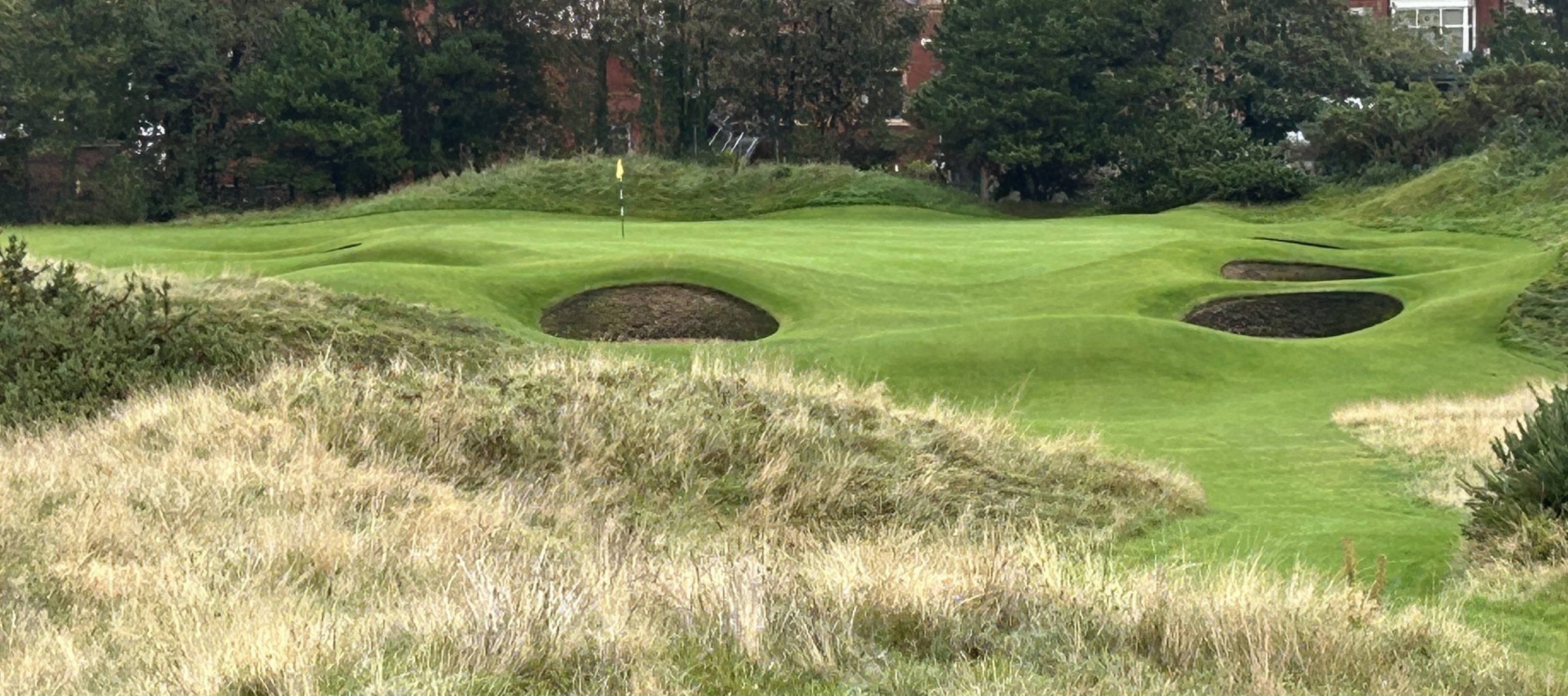
I don’t know if it was because the rain had stopped, but from #8 on I really began to appreciate Royal Lytham & St. Annes. #9 is a lovely looking short par three that has a much more elevated tee box than this photo shows. There are seven pot bunkers guarding every part of the small green but the very back. This is the easiest hole on the front and a nice way to close it out.
#10 – 307 Yard Par Four
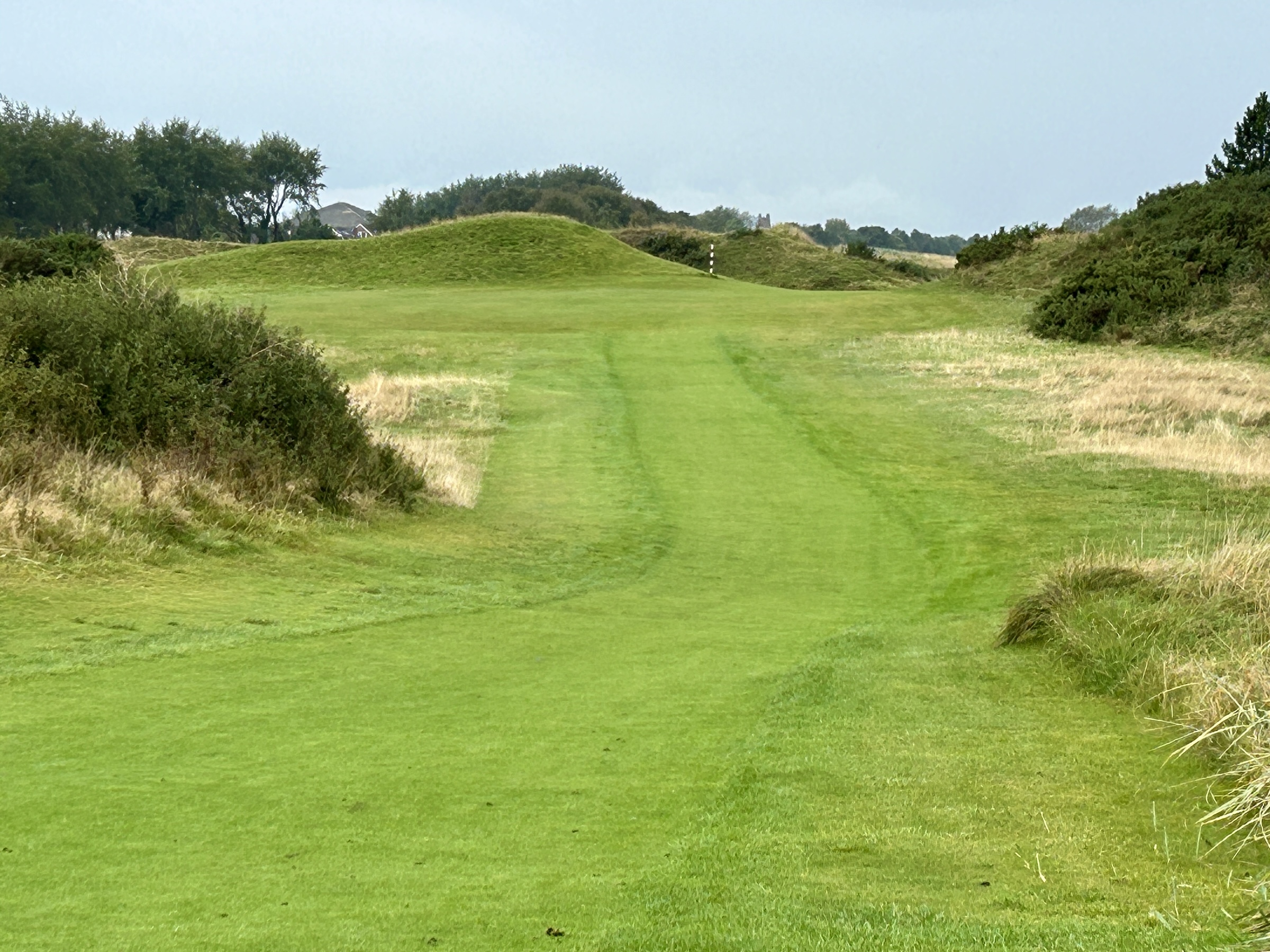
Ordinarily I don’t like blind tee shots, but Alan assures us that all we need to do is clear that narrow gap and we’ll have a clear shot to another elevated green.
Turns out he’s absolutely correct as you can see. There are already two balls on the green and mine is about to follow. Brian drained his for the first birdie of the day.
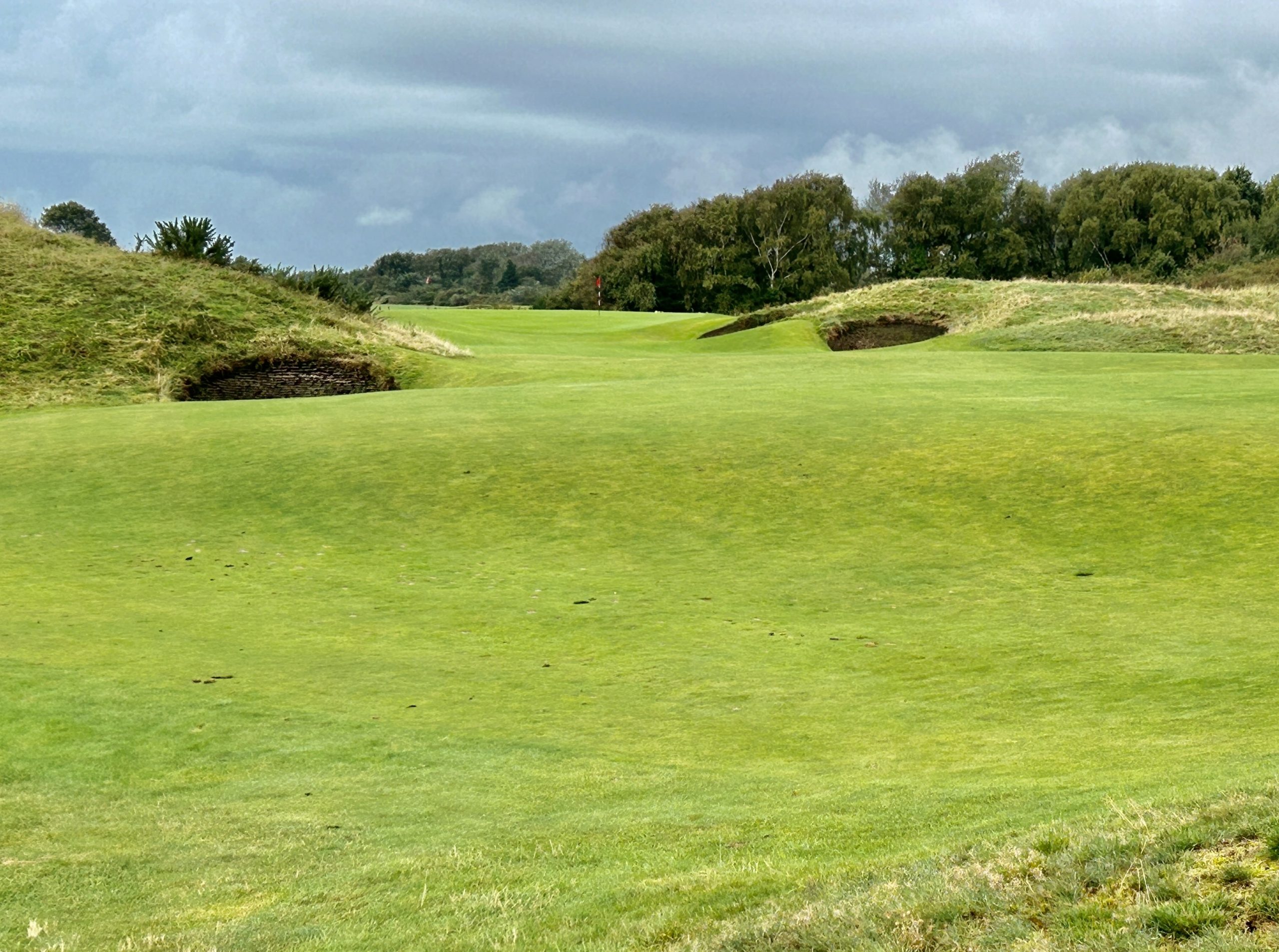
After a very tough opening stretch Royal Lytham & St. Annes has now relented with the last three holes and things are only going to get better at #11.
Royal Lytham #11 – 391 Yard Par Five
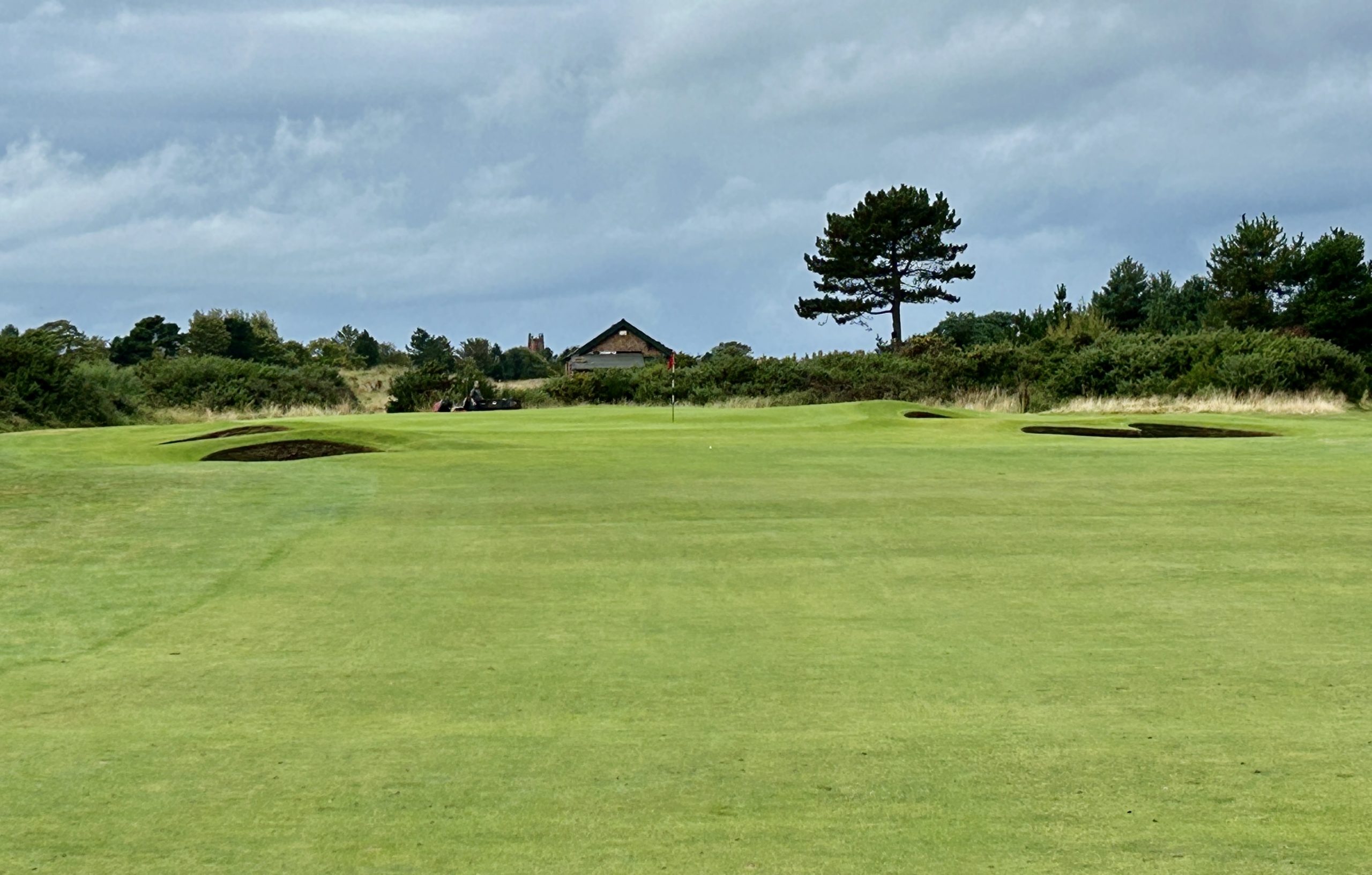
We should be embarrassed at playing a par five that is less than 400 yards, but we’re not. Two woods have got Brian just short of the green where there is a chance to putt for an eagle. You can see the ball about fifteen feet short of the green. Wish I could say he made it, but it was his second birdie in a row.
The halfway house at Royal Lytham & St. Annes is found after this hole and Alan tells us we have to have one of the club’s famous hot sausage rolls. This smiling lady serves them up along with a cold beer and they are in fact the best sausage rolls I’ve ever tasted. Don’t even think of playing this course and not having one.
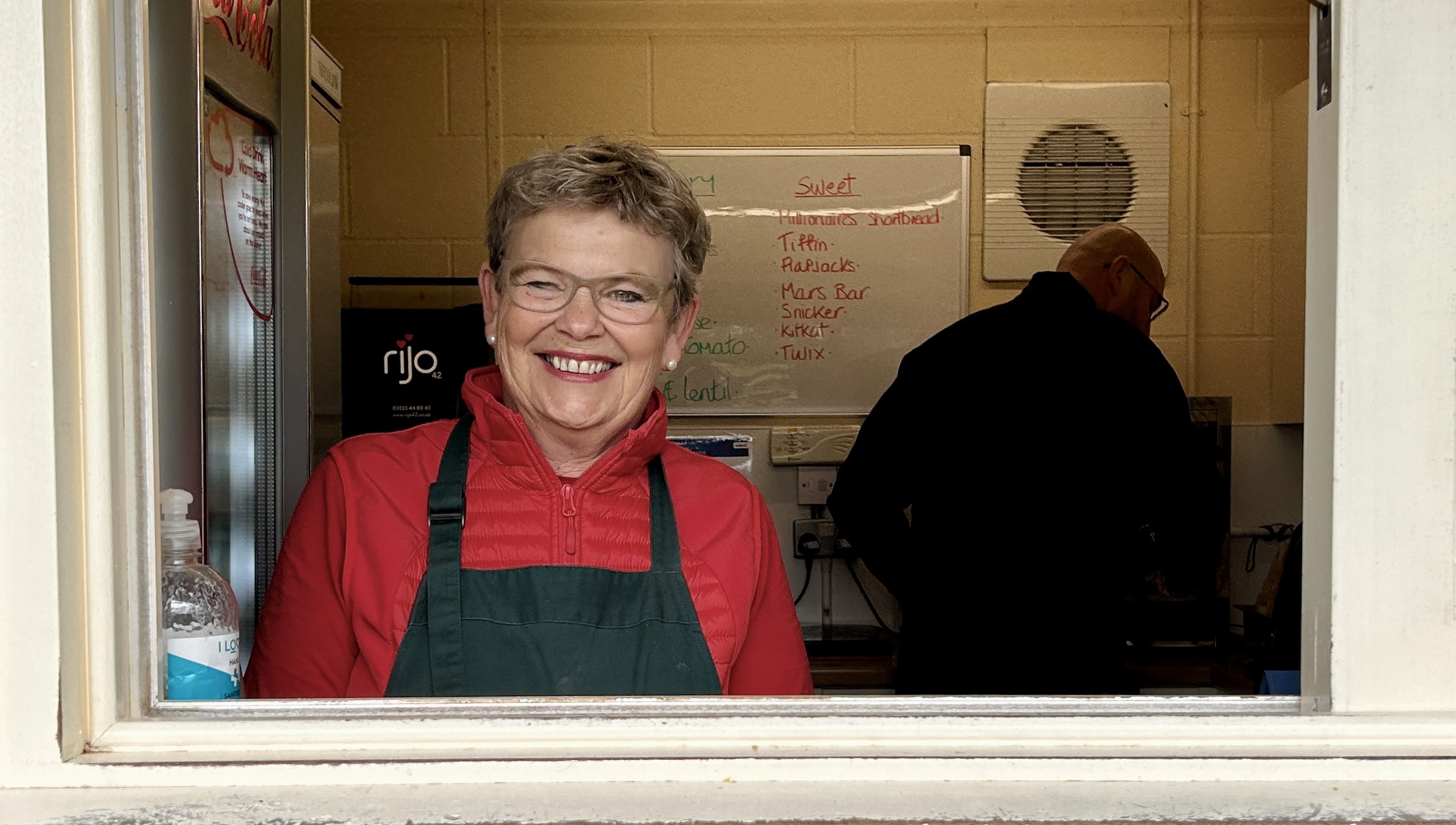
#12 – 151 Yard Par Three
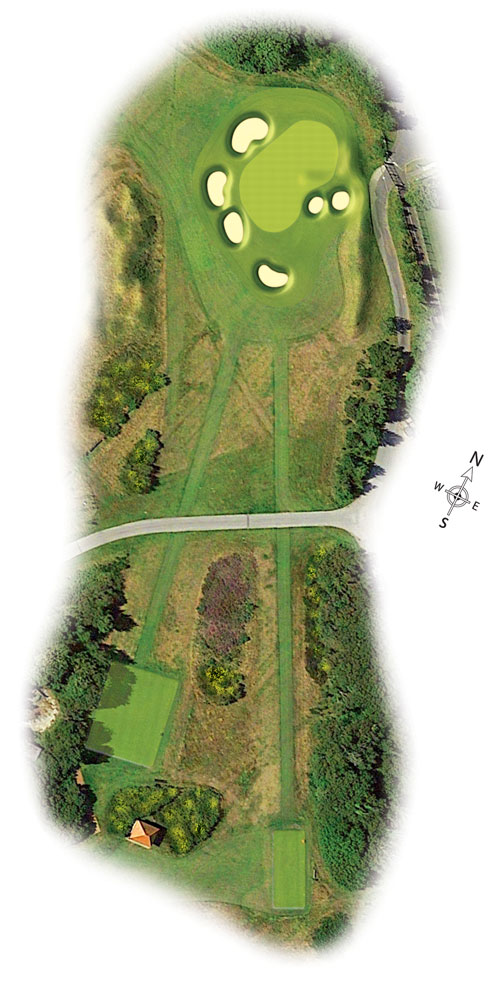
I was so absorbed with eating my sausage roll that I forgot to take a photo of #12. The elevated green makes this a much tougher tee shot than #9. The trap in front eliminates the possibility of landing short and rolling on and the five other bunkers are just waiting to gobble up anything but a perfectly struck ball. After four very gentle holes this one brought us back to reality.
Royal Lytham #13 – 275 Yard Par Four
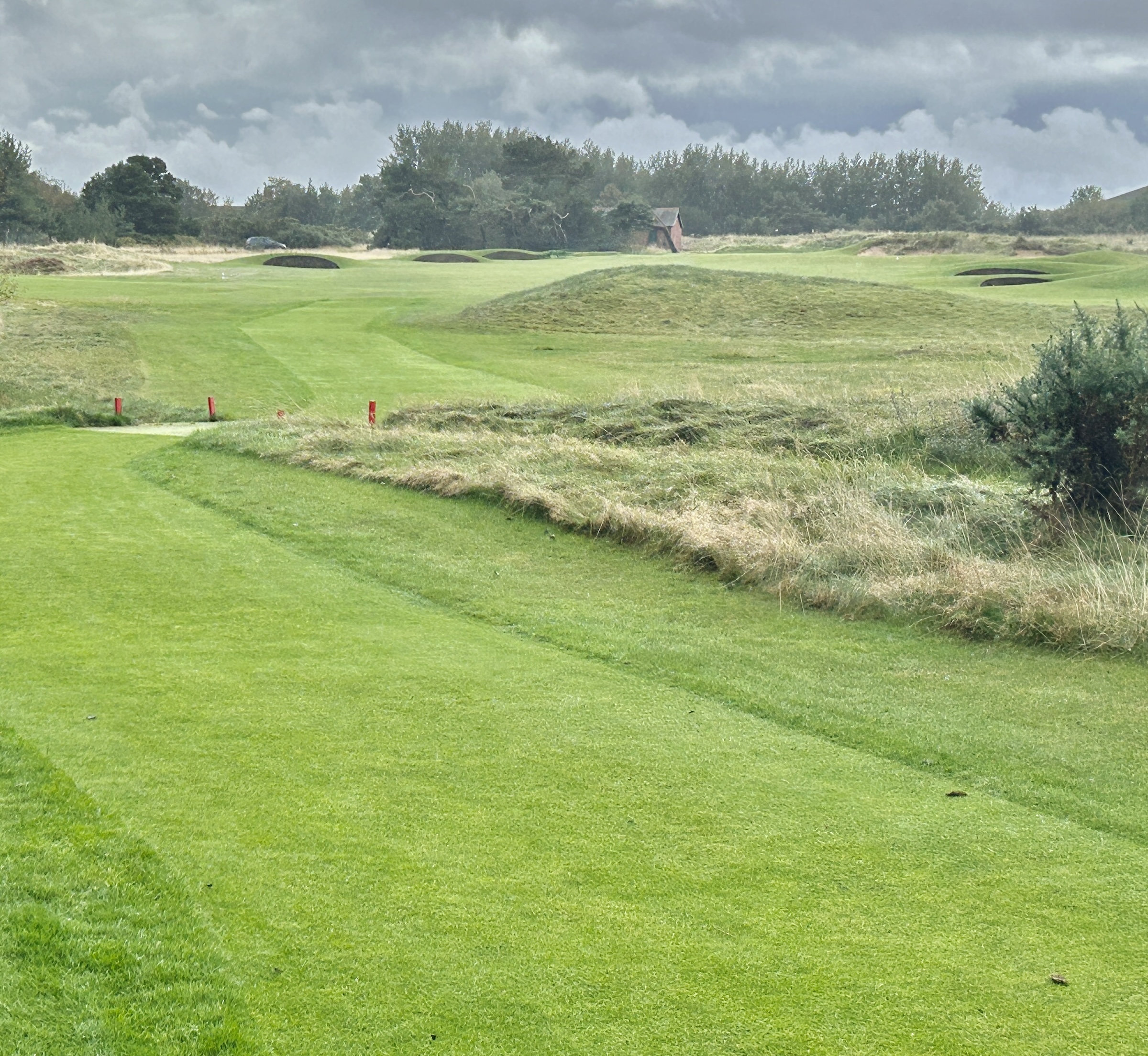
The shortest of the short par fours at Royal Lytham & St. Annes is the #18 stroke hole. Even for the pros it’s only 357 yards which would make it driveable for the likes of Rory or Bryson. The only challenge is to avoid the bunkers and the fairway is actually quite generous by the standards of most of the other holes. Even a modest drive leaves a great opportunity for a bump and run approach to a long narrow green. Brian’s hot hand continues here as he drains a 70 foot putt to save par.
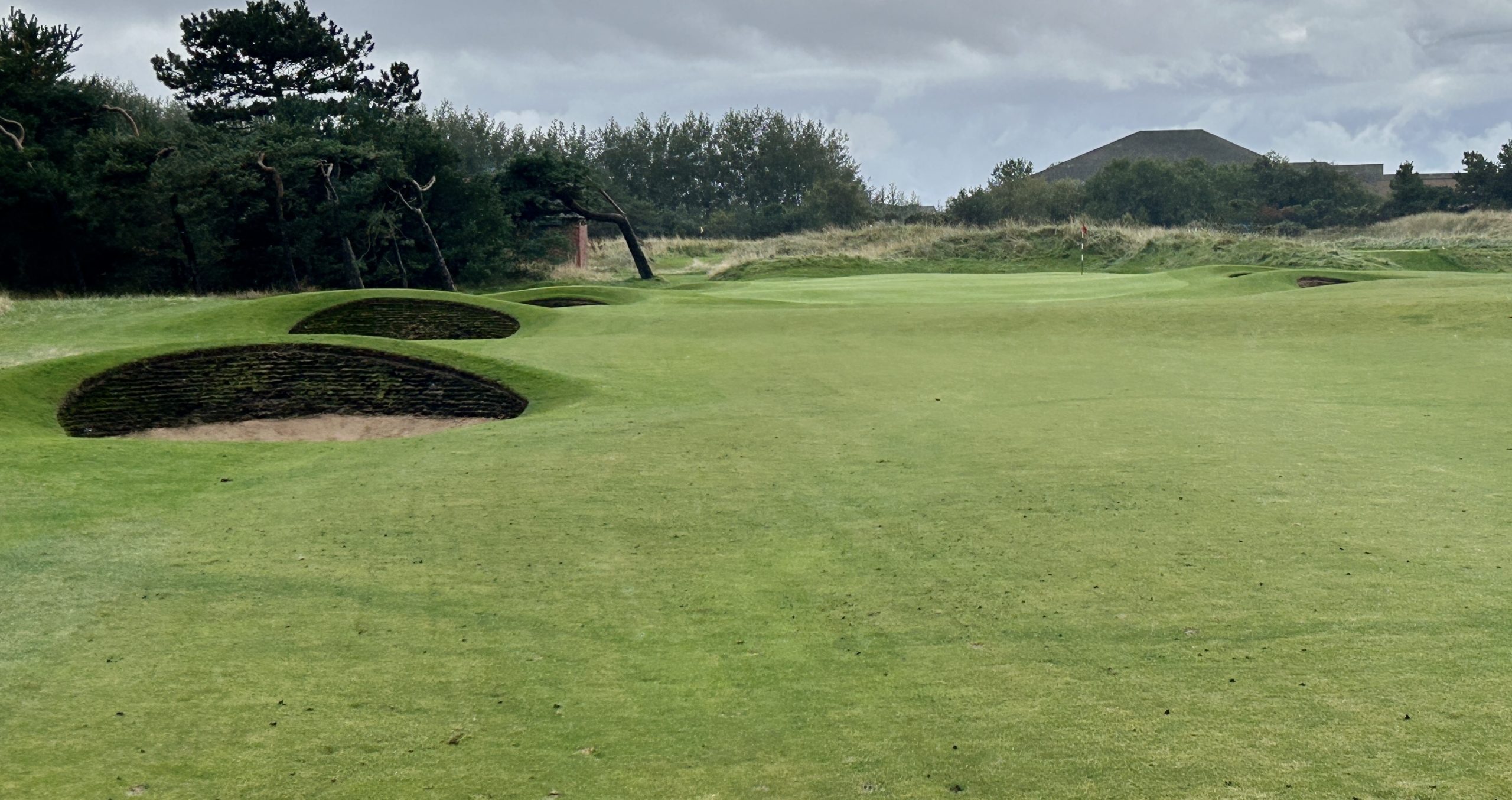
If you failed to birdie #11 then this is your next best chance.
#14 – 418 Yard Par Five
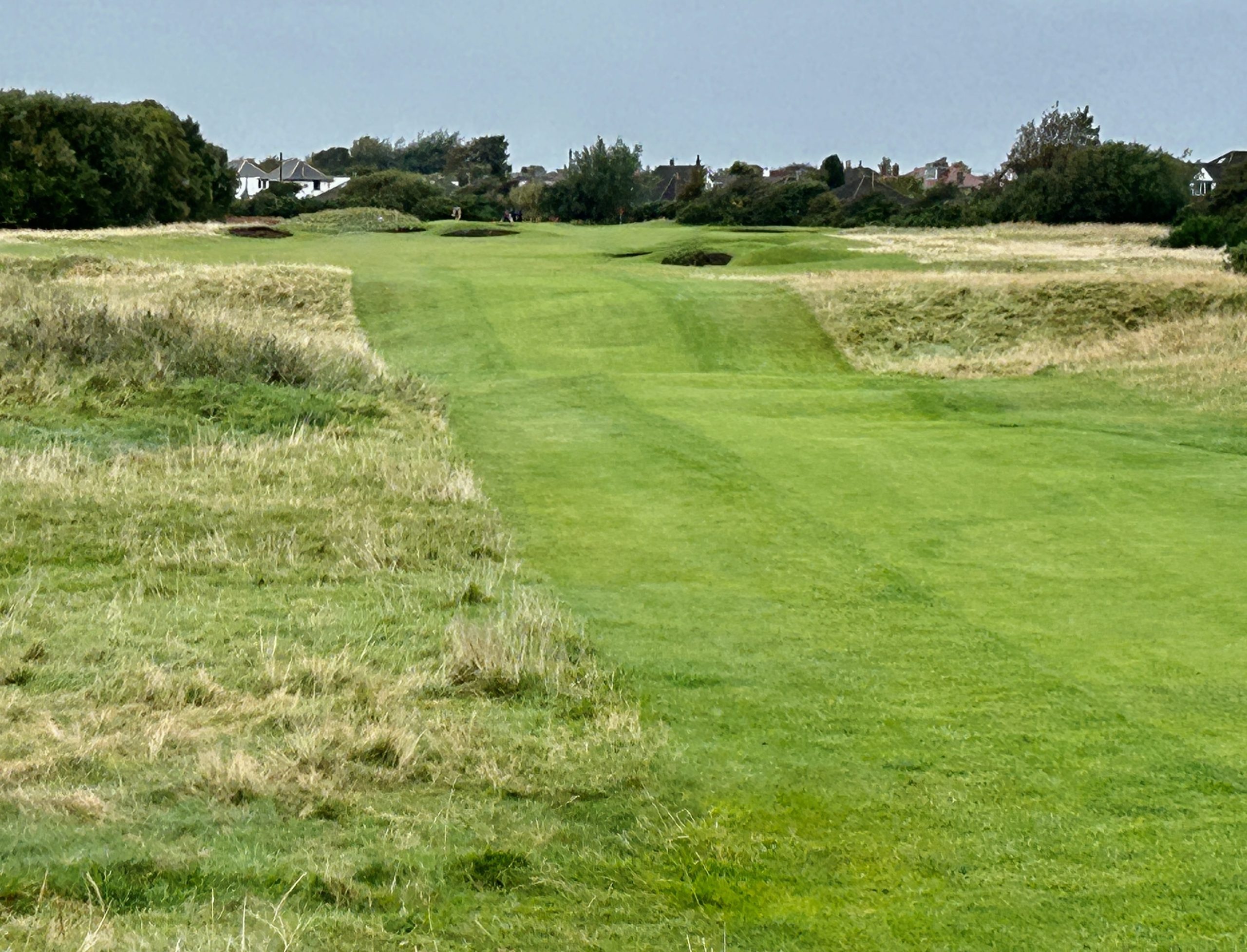
This would be a very difficult par four at this distance, but as a par five it once again opens more options including putting the driver away. The bunkers are very strategically placed on this hole and if you can avoid them by playing this as a three shot hole then a par or better should appear on your scorecard.
Royal Lytham #15 – 432 Yard Par Five
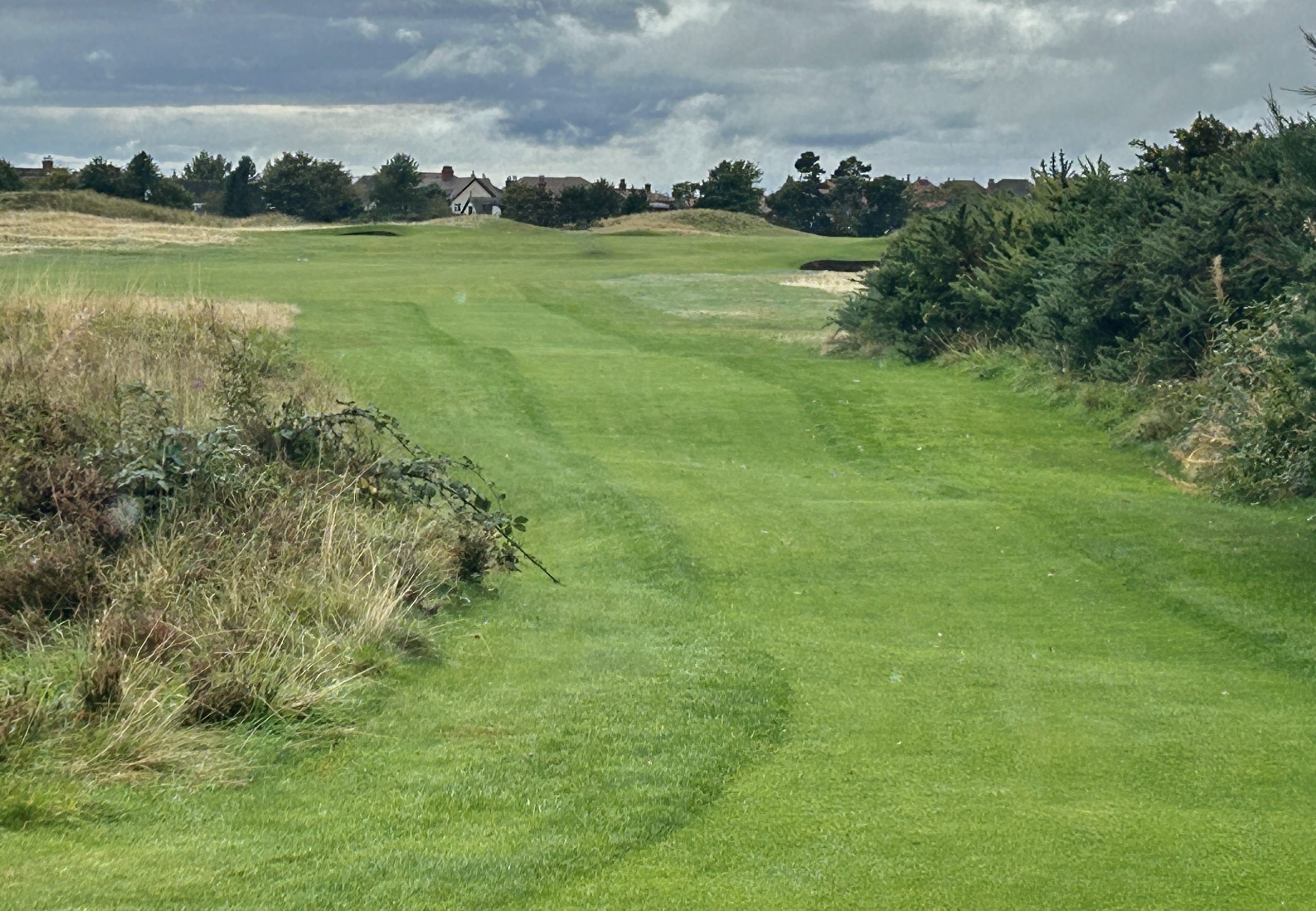
Here we go again with another short par five, but one that is much tougher than the last three. It is the #2 stroke from all tee boxes and the start of what from the pro tees is one of the toughest finishing stretches in golf. It was here that the wheels started to come off for Adam Scott in 2012.
However, unlike the last hole, the fairway here is reasonably wide and driver is not out of the question. If you can pull that off then the second shot will be that much easier and leave a short approach to the green.
The photo below gives a good representation of just how nice the greens at Royal Lytham & St. Annes are. This one has some tricky little undulations with require Alan to do some careful reading. And no, those are not eagle putts coming up, but rather birdies which alas, were missed again. On the other hand, playing from the forward tees you should be feeling pretty good about your score from #8 on if you’ve managed to stay out of the bunkers.

#16 – 333 Yard Par Four
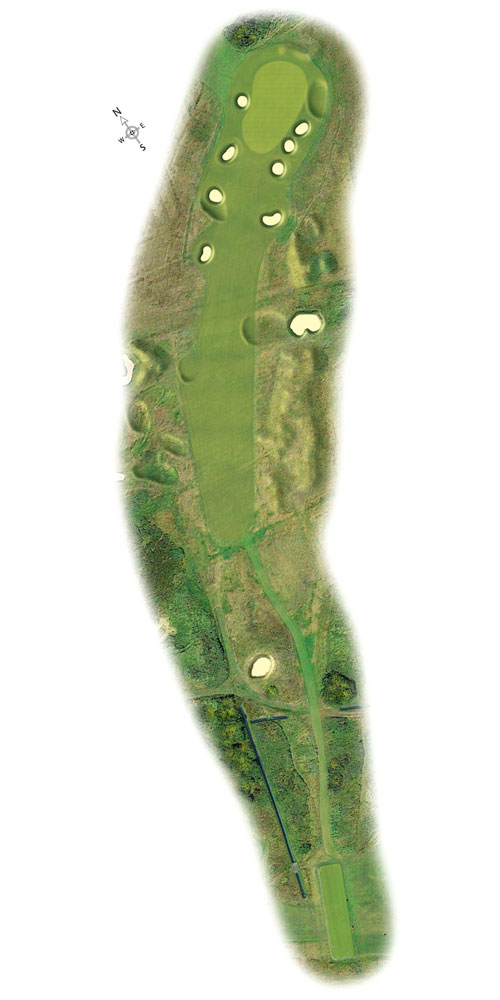
The respite from the rain has ceased and once again I have to put the camera away. This is the other blind tee shot at Royal Lytham & St. Annes and the scene of Seve Ballesteros’ miracle birdie here in 1979. Have a look.
Well at least none of us ended up in a car park, but avoiding the eight bunkers that line both sides of the fairway leading up to the green proved impossible.
Royal Lytham #17 – 404 Yard Par Five
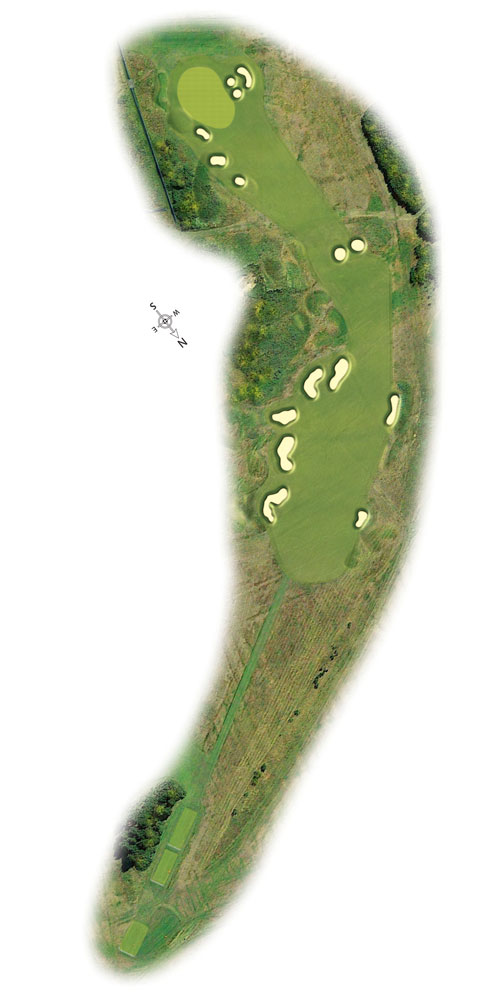
This hole is the last of the short par fives and probably the most difficult of the lot with no less than fifteen bunkers. The corner of the dogleg is ridiculously tiny and the scene of one of the greatest shots in golf. It was from a seemingly impossible lie that Bobby Jones hit a five iron to the green that so stunned his opponent Al Watrous that he promptly three putted and handed the lead to Jones who went on to win the first Open held at Lytham & St. Annes. Follow this link for a more detailed explanation of that shot.
#18 – 309 Yard Par Four
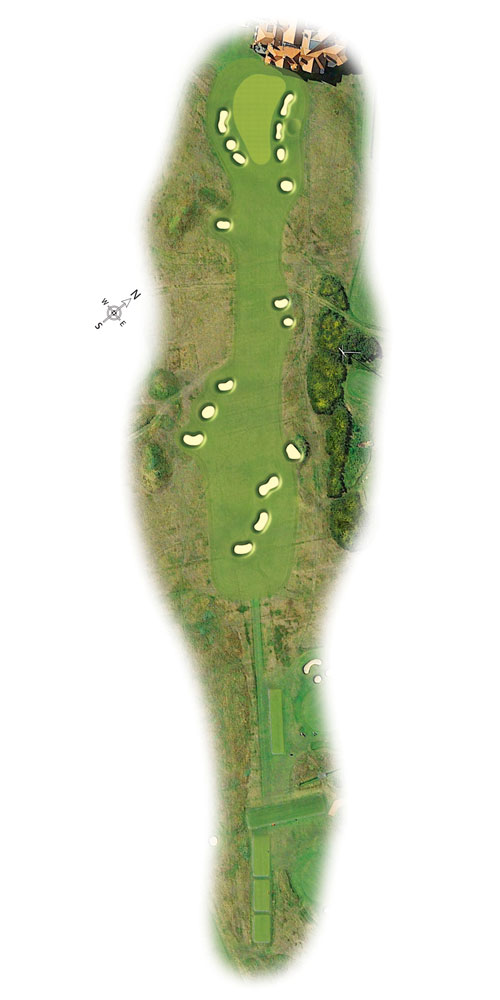
The final hole at Royal Lytham & St. Annes really amps up the bunkering with 17 of the buggers. It was here that Brian hit the drive of the day with a bullet straight down the middle.
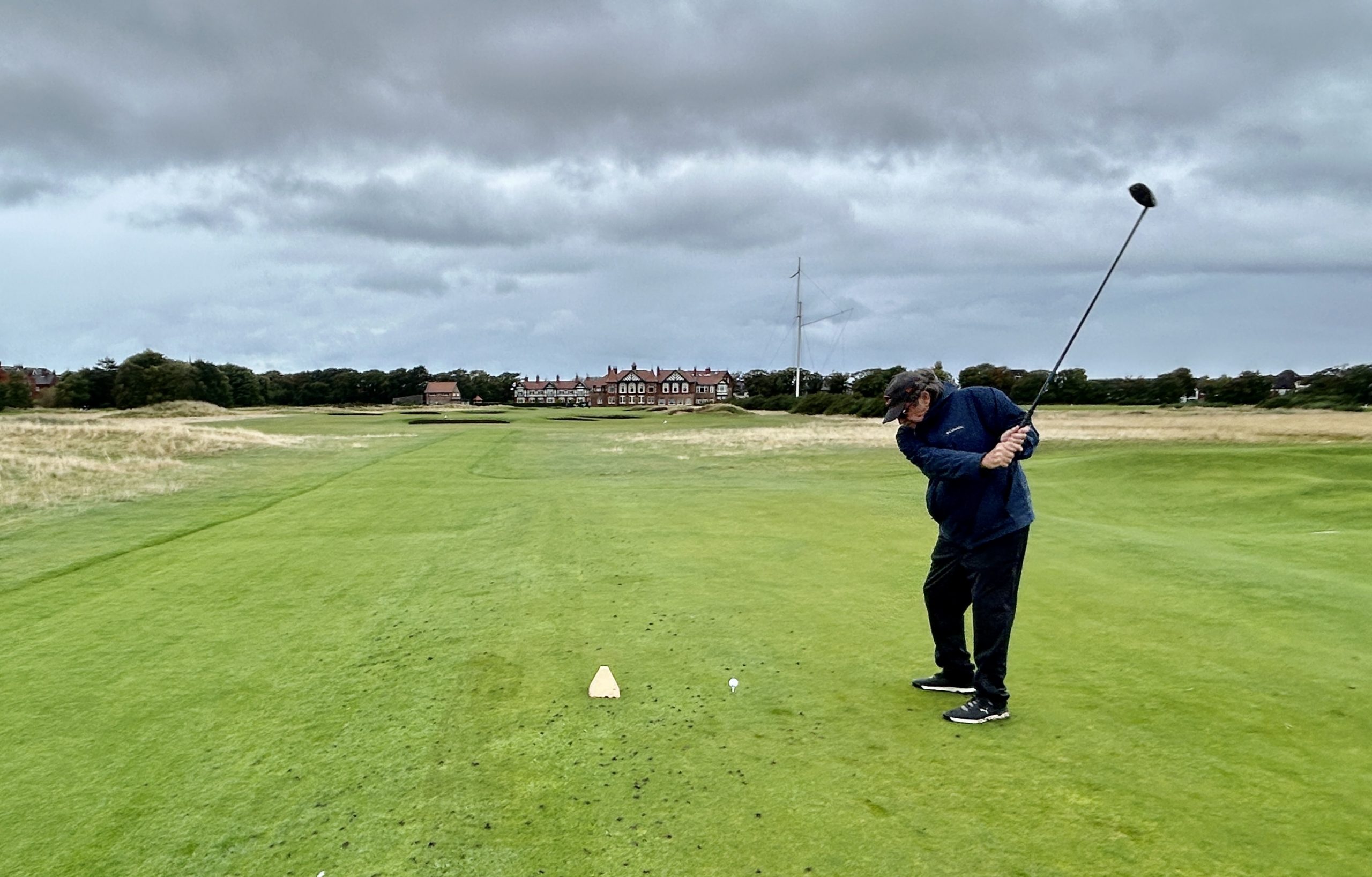
All that was left was this seemingly easy approach shot.
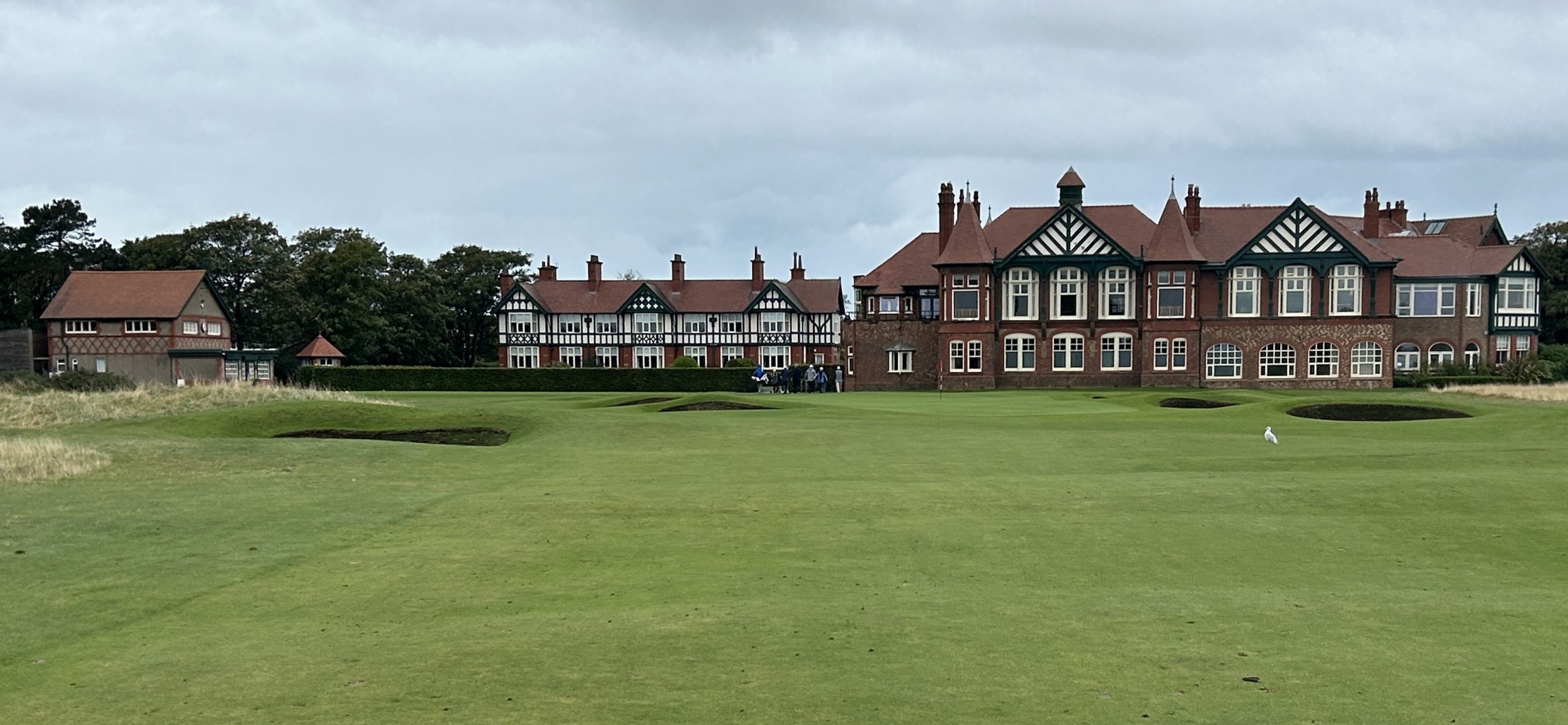
But alas the bunkers got the final say and the birdie to be never materialized. Still we were three happy campers after playing one of toughest of The Open courses, albeit from the wimpy forward tees.

Tomorrow we will take a day off from golf and I’ll spend some time exploring the Liverpool waterfront.

